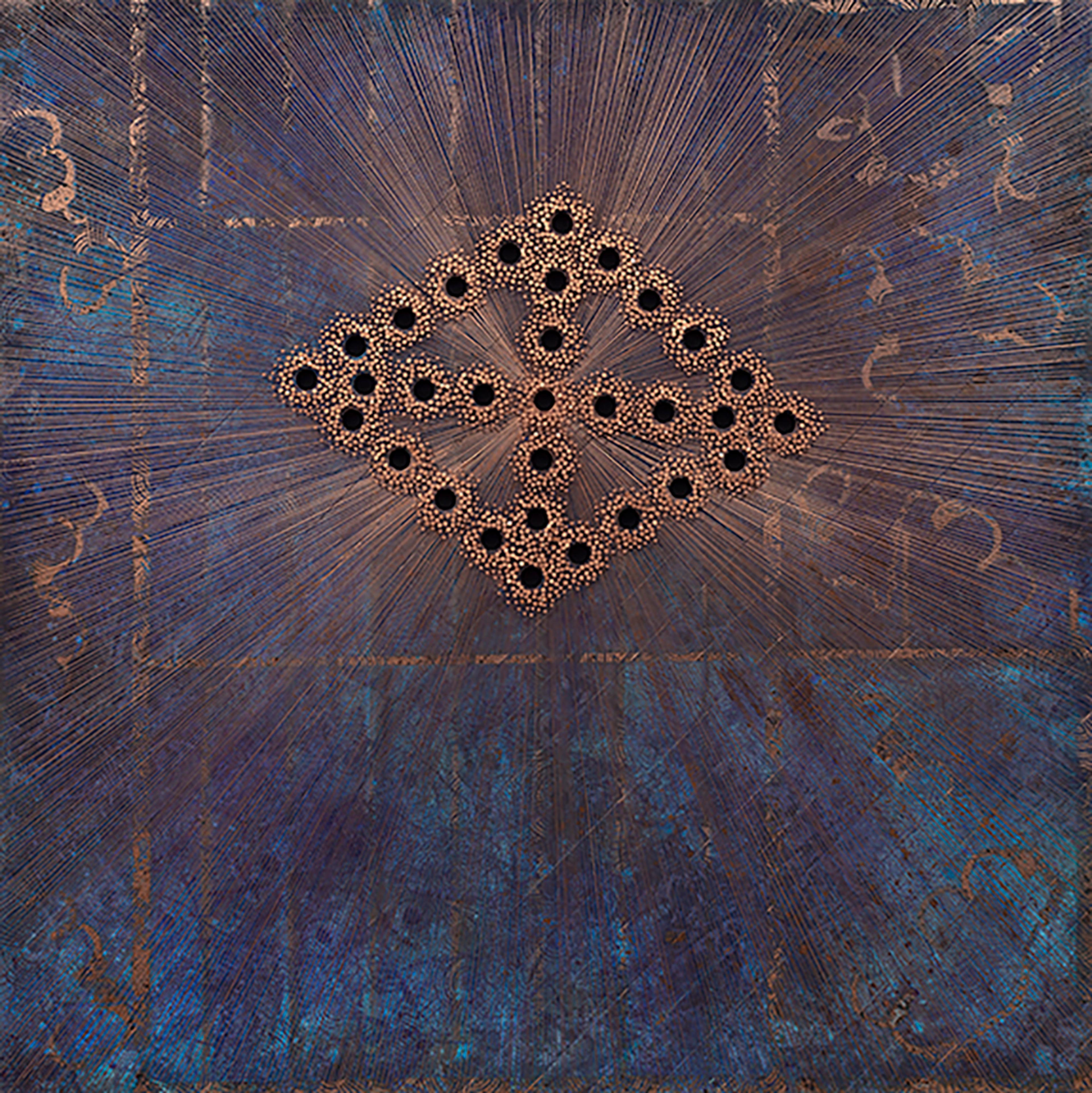
Jeffrey GibsonMigration
About
As a New York-based Mississippi Band of Choctaw and Cherokee artist, Jeffrey Gibson merges aspects of Native American visual culture with allusions to contemporary geometric abstraction. The artist references the colors and patterns of nineteenth century painted rawhide containers, commonly called parfleche, which are associated with particular Native communities in the Plateau, Plains, and Great Basin regions.
By intermingling these designs with a style linked to celebrated, non-Native artists such as Frank Stella and Joseph Albers, Migration contests an American art history that overlooks Native American art.
The title of this work recalls historically nomadic cultures of Indigenous peoples of the Great Plains, as well as the forced dispossession of Native Americans by the federal government across the country during the nineteenth and twentieth century. Migration also echoes the artist’s personal history. Gibson grew up in Germany, South Korea, and the United States and has described himself as a nomad.
Formally, Migration also suggests kineticism, a prolific theme in Gibson’s work. As a Native American and a gay man, the artist found acceptance at powwows and in queer club culture. Migration seems to vibrate with the energy and color of these environments, asserting that movement, so often a mechanism of division, can also be a tool of connection that fosters understanding.
Artist
Jeffrey Gibson
Dimensions
70 × 57 1/8 in. (177.8 × 145.1 cm)
Credit Line
Art Bridges
Date
2016
Medium
Acrylic and graphite on canvas
Object Number
AB.2017.15
Signed
verso: [signed] / 2016
Inscriptions
verso: Migration
Provenance
(Roberts & Tilton, Los Angeles, CA); purchased by Art Bridges, TX, 2017

